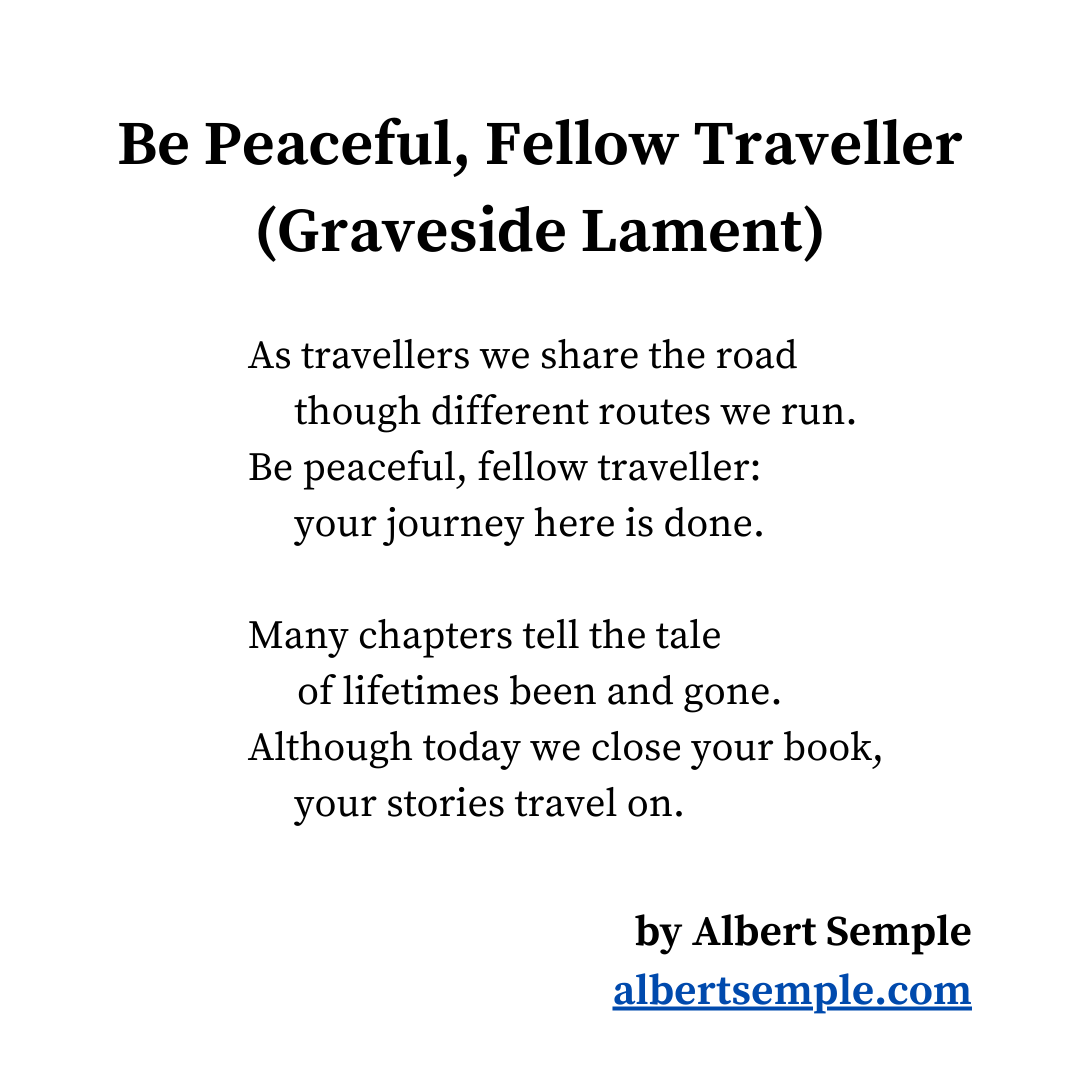26 Dec 2023
In discussion with a funeral celebrant, he pointed out that at the graveside, there is a lack of conclusion to a secular ceremony, and attendees are never quite sure that the ceremony is over.
In Christian ceremonies, there is a common prayer used in that scenario. It appeared in the first edition of the Book of Common Prayer (1549) as this:
Then the priest castyng earth upon the Corps, shall saye.
I COMMENDE thy soule to God the father almighty, and thy body to the grounde, earth to earth, asshes to asshes, dust to dust, in sure and certayne hope of resurreccion to eternall lyfe, through our Lord Jesus Christ, who shall chaunge our vile body, that it may be lyke to his glorious body, accordyng to the myghtie workyng wherby he is hable to subdue all thynges to himselfe.
This still exists in the 1662 edition of the same book:
Then, while the earth shall be cast upon the body by some standing by, the Priest shall say,
FORASMUCH as it hath pleased Almighty God of his great mercy to take unto himself the soul of our dear brother here departed: we therefore commit his body to the ground; earth to earth, ashes to ashes, dust to dust; in sure and certain hope of the Resurrection to eternal life, through our Lord Jesus Christ; who shall change our vile body, that it may be like unto his glorious body, according to the mighty working, whereby he is able to subdue all things to himself.
When this is read at the graveside (usually without the final sentence about our vile bodies!), it communicates to the mourners that the ceremony has concluded, making it clear they are now able to respectfully leave the graveside.
But in a secular ceremony, there is no such conclusion, and (I've been told) mourners are often stood at the graveside uncomfortably trying to work out when it is a repsectful time for them to withdraw.
So I attempted to write a poem for this scenario. It needed to be short — no one wants to read the Iliad at a rainy and windy graveside. Rhyme and metre would be used to make clear that this is a poem and not an extension of the prose eulogy, while also aiding memorisation and recall.
I leveraged two analogies for life and death in the poem, both of which are designed to provide comfort to the bereaved:
- Firstly, that life is a journey. By extension, we are all fellow travellers undertaking our own journeys on a shared landscape. Sometimes, our paths cross, and sometimes we travel as companions. This describes how some mourners may be acquaintances who have lightly engaged with the deceased, rather than a close personal contact. It also reflects how our relationship with the deceased can change over time, i.e. we may once have been a travelling companion of the deceased while our respective journeys aligned, but then changed to acquaintance who occassionally crossed paths.
- Secondly, that life is like a story told in a book of many chapters. I used first used this analogy in the (Eulogy for Bob)[../../works/Eulogy], to describe how a persons life goes through many chapters: school, different jobs/career steps, then retirement and ill health. If each persons story is a book, then the closure of that book is a metaphor for their death.
I was also careful in this poem not to idolise the deceased: sometimes the relationship between the bereaved and the deceased is complex, so steering away from expressions of love which are not universally applicable was important to me.
Here is my attempt:

One way in which the Christian prayer conveys the finality of the ceremony is through the accompanying action: i.e. when the priest says "earth to earth, ashes to ashes, dust to dust" either the priest or mourner(s) would start scattering earth over the coffin, so i was keen to incorporate an action into this poem.
Celebrants tend to read from a document wallet which resembles a book, so at the end of the penultimate line, "While today we close your book" they can pause, physically close the document wallet, and recite the final line from memory, giving a visual indication of the completion of the ceremony.
< < Previous Post: 10 Dec 2023
Next Post: 15 Jan 2024 >>